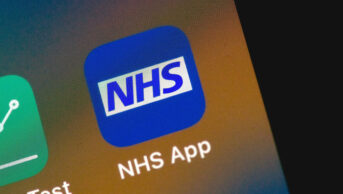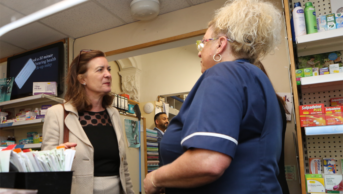
Shutterstock.com/Mclean
The drive to reduce the reliance on paper in the NHS continues. On 1 November 2019, the government announced yet another round of funding for secondary care to help introduce electronic prescribing by 2024.
Ministers claim that, when fully implemented, this £78m system will “reduce potentially deadly medication errors by up to 50%, when compared with the old paper systems”. The Pharmaceutical Journal found in August 2019 that electronic prescribing has already led to some trusts seeing improvements in patient safety.
In the community, a similar drive is underway. More than 6,000 GP practices are able to upload prescriptions electronically and the first area to issue “barcoded” electronic prescription tokens was also announced in August 2019.
As Matt Hancock, the health secretary, said: it is crucial to harness technology across the NHS to improve care, save time for patients and make the lives of hardworking staff easier. “It can’t be right that there are occasions when archaic paper prescriptions still have to be used.”
But Hancock may be surprised to hear that there is a sector completely missing from his plans: community pharmacy. While hospitals and GP surgeries are dumping their faxes and binning prescription pads, community pharmacies are printing on more paper than ever before.
NHS Digital’s electronic prescription service merely pays lip service to the idea of cutting back on paper
While IT systems such as ‘Manage Your Service’ — from which pharmacists can electronically submit prescriptions to the NHS Business Services Authority and make claims under the pharmacy quality scheme — have been a welcome development, other digital initiatives have not had the desired impact.
NHS Digital’s electronic prescription service (EPS) merely pays lip service to the idea of cutting back on paper, with community pharmacists telling The Pharmaceutical Journal that the service has simply shifted the burden of paper — and its cost — from the GP practice to community pharmacy.
Where paper prescriptions were once printed, signed and handed to the patient by the GP, tokens are now electronically transmitted to the pharmacist — but many pharmacists must still print them.
For some community pharmacies, this need has been partly mitigated by NHS Digital’s real-time exemption checking pilot, which launched in February 2019, exempting some EPS tokens from printing for patients within the maternity, medical, pre-payment, low-income scheme and HMRC exemption categories.
But even in these cases, staff in the dispensary — concerned with maintaining patient safety in the checking process — routinely print EPS tokens regardless to act as a pick list. With two pharmacies in the north of England trialling the use of iPads to access patients’ summary care records, it seems logical that the same technology could be used to create a digital pick list that could be directly compared with the electronic prescription. This would save time and potentially help prevent dispensing errors.
We are very far from realising the NHS’s paperless future. Despite government talk of a ‘paperless NHS’ dating back to 2013, NHS Digital says it has yet to see plans for a “paperless pharmacy” from NHSX, the body responsible for policy in this area, but has asked pharmacists for their ideas on how to cut back on the sector’s use of paper.
The government has a big hole in its plans for a paperless NHS. If it is serious about using technology to reduce costs and improve safety in the health service, then it needs to invest in proper technology for community pharmacies.


